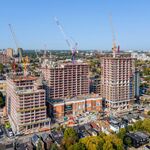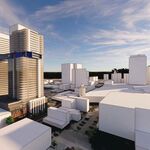ShonTron
Moderator
Member Bio
- Joined
- Apr 24, 2007
- Messages
- 12,536
- Reaction score
- 9,528
- Location
- Ward 13 - Toronto Centre
Here are some of the pictures from my visit to Shenzhen. As I know people don't like flickr that much, I've only posted some, not all, of my photos. The larger versions of all photos are there.
http://flickr.com/photos/7119320@N05/sets/72157608827869738/
I arrived in Shenzhen's airport from a flight from seeing my father in Manchuria (Changchun). I stayed with a family friend in the west end, Nanshan, in a solidly middle class condo. Multi-level shopping centres everywhere, all the main roads are built for cars, though there are lots of bus lanes. I hate pedestrian overpasses, and in China, almost no thought is given to the disabled. There are narrow ramps along the stairs for walking bicycles and strollers, but useless for wheelchairs. There are few low-floor buses, even new ones. Apart from the architecture - residential ranges within typical suburban 416/905 condo fare - Le Corbusier would be proud. Robert Moses would be in heaven. And I thought MCC was a pedestrian hostile, yet dense area.
Shenzhen has a municipal population of 12 million - the city population is smaller, but growing rapidly. 30 years ago, it didn't even exist, chosen by Deng Xiaopeng as a trial economic liberalization area. Fascinating.




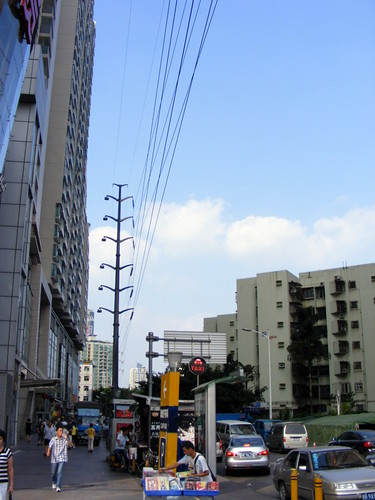


There is a downtown, yet one would be hard-pressed to find it by looking at the skyline. Lots of department stores, malls, the stock exchange and office towers.
It is very hard to try to find a "heart" or core of this city. There's many clusters of these post-modern skyscrapers (though there are a few that are a bit more scaled back and more "Toronto Modern"). The department stores and shopping malls are all over the city, many of them catering to a higher end clientèle. There is a shopping core with a cluster of department stores and pedestrian shopping streets, near the main cluster of hotels, the Mainland trains Railway station and a big office cluster, but it really is just one of many of these nodes. It's a 21st century LA.





This is my favourite picture. Skyscrapers and older "shake-hands" tenements.
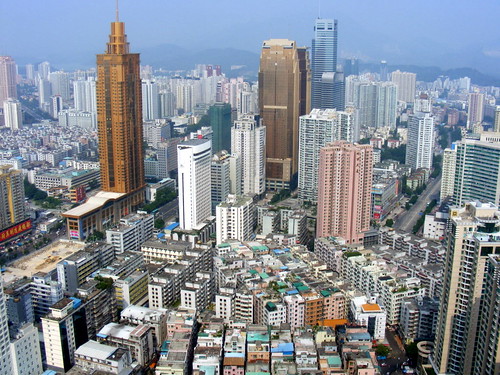
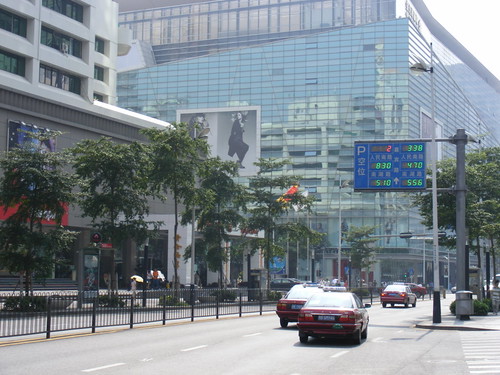
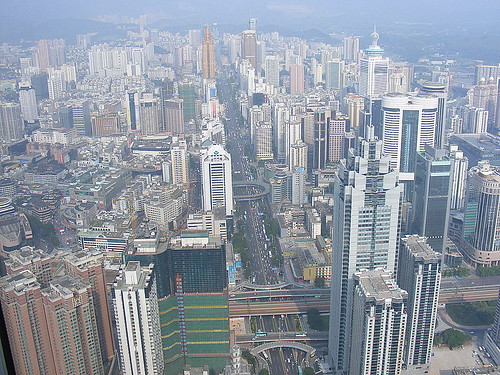

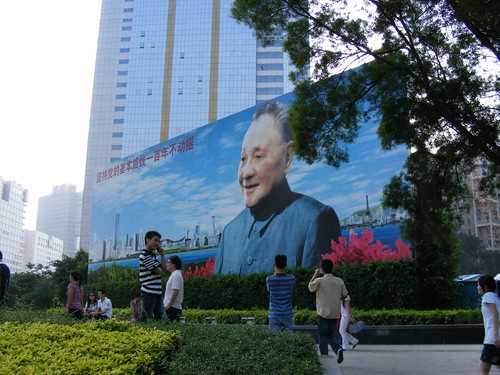


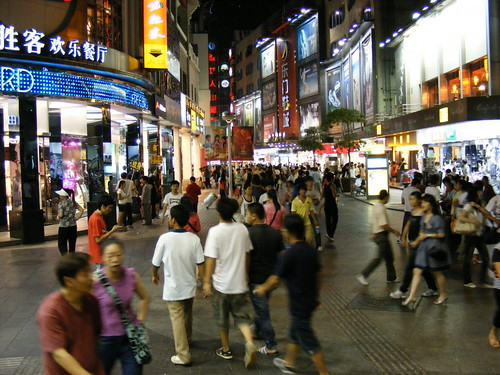
The Metro has all the latest bells and whistles. RFID smart cards (also good for the buses, where it deducts a lower amount than the cash fare), RFID green tokens, platform screen doors, train countdown timers on the LCD TVs (which play advisories, PR and safety messages, the times are quite visible), the trains themselves are open like the new Toronto subway cars will be, and they have blinking and flashing LED system maps. The announcements are hard to hear at times, but are pleasant.


But the subway is boring once you get past the latest in subway technology. The trains are white and metallic, spartan, almost sterile. I'll take the TTC's hard red "padded" seats in mixed form over the metal benches here. There's nothing to see as it is all underground. Stations are the same, functional, yet little else, but the west terminal (until the extension to the airport opens in about 18 months) has a large TTC-like bus terminal. The good news is in three years, the Metro will almost triple in size. Right now it hardly covers a small part of the city. In a few years, it will be respectable for the 8 million in the immediate urban region.
I saw two of Shenzhen's most famous, but a bit cheesy, tourist attractions, Window of the World, and Minsk World (both have descriptions on Wikipedia if you are inclined). The area around Window is a bit like Vegas. Neon lights, hotels, and a replica scale of the Eiffel Tower over looking Las Vegas, er, Shannan Blvd. Window is pretty much a miniature world of landmarks. You can ride to the top of their Eiffel Tower. They also have an indoor skating rink for skating (they don't have hockey) and a tube/ski hill.
From "Eiffel Tower"
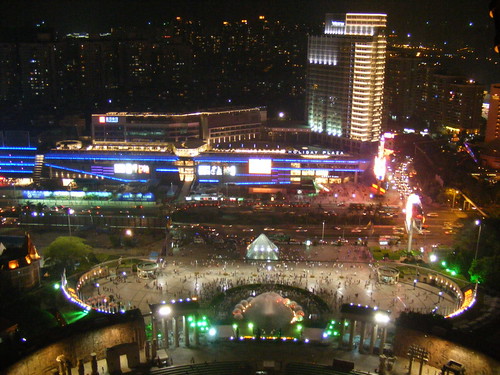
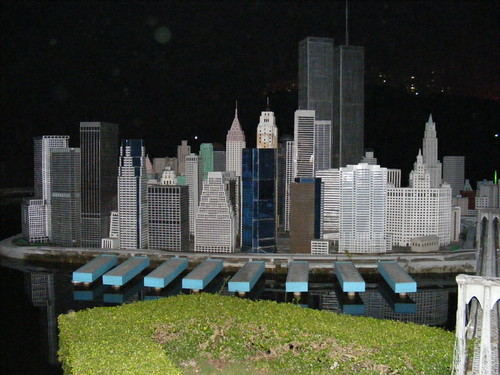
Entrance to Metro at Windows on the World

http://flickr.com/photos/7119320@N05/sets/72157608827869738/
I arrived in Shenzhen's airport from a flight from seeing my father in Manchuria (Changchun). I stayed with a family friend in the west end, Nanshan, in a solidly middle class condo. Multi-level shopping centres everywhere, all the main roads are built for cars, though there are lots of bus lanes. I hate pedestrian overpasses, and in China, almost no thought is given to the disabled. There are narrow ramps along the stairs for walking bicycles and strollers, but useless for wheelchairs. There are few low-floor buses, even new ones. Apart from the architecture - residential ranges within typical suburban 416/905 condo fare - Le Corbusier would be proud. Robert Moses would be in heaven. And I thought MCC was a pedestrian hostile, yet dense area.
Shenzhen has a municipal population of 12 million - the city population is smaller, but growing rapidly. 30 years ago, it didn't even exist, chosen by Deng Xiaopeng as a trial economic liberalization area. Fascinating.







There is a downtown, yet one would be hard-pressed to find it by looking at the skyline. Lots of department stores, malls, the stock exchange and office towers.
It is very hard to try to find a "heart" or core of this city. There's many clusters of these post-modern skyscrapers (though there are a few that are a bit more scaled back and more "Toronto Modern"). The department stores and shopping malls are all over the city, many of them catering to a higher end clientèle. There is a shopping core with a cluster of department stores and pedestrian shopping streets, near the main cluster of hotels, the Mainland trains Railway station and a big office cluster, but it really is just one of many of these nodes. It's a 21st century LA.





This is my favourite picture. Skyscrapers and older "shake-hands" tenements.








The Metro has all the latest bells and whistles. RFID smart cards (also good for the buses, where it deducts a lower amount than the cash fare), RFID green tokens, platform screen doors, train countdown timers on the LCD TVs (which play advisories, PR and safety messages, the times are quite visible), the trains themselves are open like the new Toronto subway cars will be, and they have blinking and flashing LED system maps. The announcements are hard to hear at times, but are pleasant.


But the subway is boring once you get past the latest in subway technology. The trains are white and metallic, spartan, almost sterile. I'll take the TTC's hard red "padded" seats in mixed form over the metal benches here. There's nothing to see as it is all underground. Stations are the same, functional, yet little else, but the west terminal (until the extension to the airport opens in about 18 months) has a large TTC-like bus terminal. The good news is in three years, the Metro will almost triple in size. Right now it hardly covers a small part of the city. In a few years, it will be respectable for the 8 million in the immediate urban region.
I saw two of Shenzhen's most famous, but a bit cheesy, tourist attractions, Window of the World, and Minsk World (both have descriptions on Wikipedia if you are inclined). The area around Window is a bit like Vegas. Neon lights, hotels, and a replica scale of the Eiffel Tower over looking Las Vegas, er, Shannan Blvd. Window is pretty much a miniature world of landmarks. You can ride to the top of their Eiffel Tower. They also have an indoor skating rink for skating (they don't have hockey) and a tube/ski hill.
From "Eiffel Tower"


Entrance to Metro at Windows on the World

Last edited:
